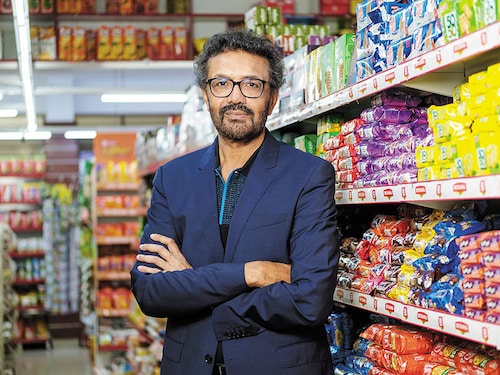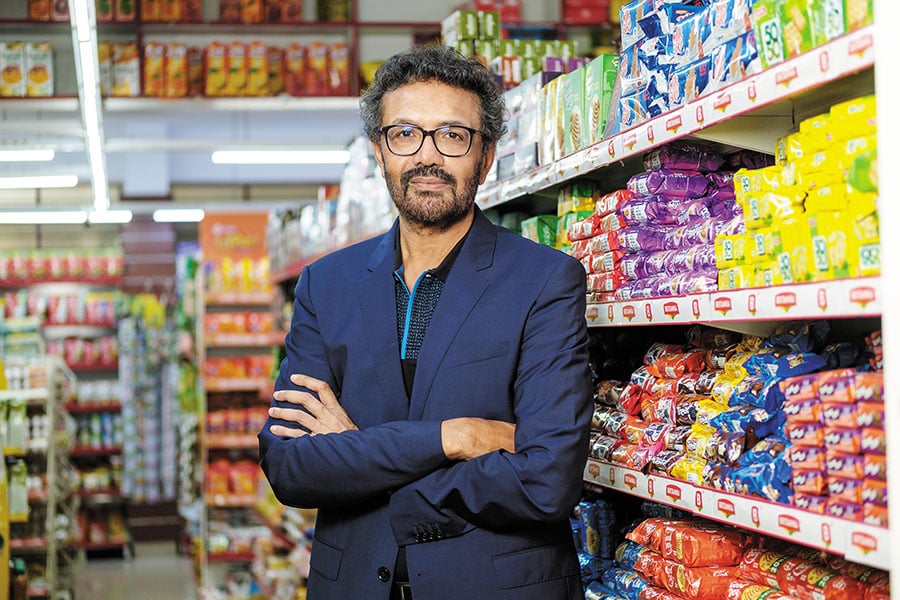Britannia's Biggest Story is Margin: MD Varun Berry
Managing director Varun Berry on removing cost, betting big on the dairy business and identifying potential leaders


 Varun Berry, managing director, Britannia. Photo: Nishant Ratnakar/ Forbes India[br]When Varun Berry, former CEO of PepsiCo Foods, joined Britannia as chief operating officer in 2013, he resisted a ‘huge’ temptation. Berry wanted a headstart, and the easiest way was to get ‘great managers’ he had worked with in the past. “I didn’t do this,” he recalls. “I built a homegrown team, and that’s the biggest reason for our success over the last seven to eight years,” says Berry, who was elevated as managing director in April 2014 and re-appointed for five years in 2018. In an exclusive interview with Forbes India, Berry talks on a variety of topics ranging from focusing on profitable growth and leadership traits to how dairy and cakes are the big focus areas. Edited excerpts:
Varun Berry, managing director, Britannia. Photo: Nishant Ratnakar/ Forbes India[br]When Varun Berry, former CEO of PepsiCo Foods, joined Britannia as chief operating officer in 2013, he resisted a ‘huge’ temptation. Berry wanted a headstart, and the easiest way was to get ‘great managers’ he had worked with in the past. “I didn’t do this,” he recalls. “I built a homegrown team, and that’s the biggest reason for our success over the last seven to eight years,” says Berry, who was elevated as managing director in April 2014 and re-appointed for five years in 2018. In an exclusive interview with Forbes India, Berry talks on a variety of topics ranging from focusing on profitable growth and leadership traits to how dairy and cakes are the big focus areas. Edited excerpts:
On improving margins
The biggest story for Britannia over the last decade would be margin. In 2012, we were 4.5 percent this quarter was an anomaly at 21 percent average margin for previous quarters was 15 to 16 percent. Moving from 4.5 percent to 15-16 percent is the big story. And part of it is due to the premiumisation journey. The other part is that we ensure that we take cost out of everything we do. Going threadbare through our business, and looking at it in a project way, and then ensuring that cross-functionalities work. We have been getting almost 2 percent of our revenue as cost out of our business. That’s a massive number.
On homegrown team"s X-FActor
The biggest factor for our success has been a homegrown team. It was very tempting for me to get great managers I had worked with in the past. I would have got a running start to the business by doing this. I didn’t. Within the company we identified talent, brought them up from three levels below what they were doing, trained them, and gave them a much larger responsibility. This made a big difference. Though the team has been much understated, we operated very well and executed things nicely. This is the factor for our success: Having a very well-oriented, coordinated team.
On leadership traits and succession planning
One of the traits I look for in the leadership team is the conviction and will to carry on and succeed. A leader has to also leave his successor, and it has to be from his team. This is one thing that we have been clear about. We don’t consider age to be a criteria. It doesn’t matter. You can be 30, but if you are good enough to get the job, you will get it. It’s all about integrity, intellect, analytical ability, people management and great execution skills. I have always liked people who are great executors. Another trait I look for is one has to be details-oriented. We believe that God lies in the details. As far as presentation skills are concerned, I don’t care if one doesn’t have them. It’s okay.
On a push vs pull model
Growth had decelerated (last fiscal), but we haven"t seen this kind of share gain ever before in any year. And we are not looking at pushing volumes at this stage, because they will bounce back at some stage. We do not just keep pushing volumes because there is a limit to how much elasticity the system has at this point in time. Obviously, we are driving topline as much as we can, but we are not dumping at all, and we focussed our energies on making sure that we set up the right systems and processes for the future. So, it"s better to look at process changes, keep the house tidy, rather than do a hectic activity of push. It"s best to be on a pull model.
On ‘good’ food
We have got all our products 100 percent trans-fat free. Forty-six percent of our portfolio is fortified with essential micronutrients. We have increased whole grains and dietary fibre by serving by almost 10 percent. And our promise, as we go forward, is to reduce 5 percent sugar and sodium in our bakery products by 2021. We want to remove all the plastic trays in our products by 2022. We want usage of recyclable laminate by 2024. And we want to focus on plastic recycling.
On reducing inventories
We have this programme called Zero Day Inventory for certain cities, which are the more expensive cities to operate in for the distributors. And, even with the regular distributors, we have made sure that we give them as much inventory as is required. We have got this system called the Continuous Replenishment System, which looks at what the distributor requires and provide only what is required rather than dumping extra stocks there. So we are following that continuous replenishment system to the T.
On new dairy initiatives
We launched a milkshake that has done well. We created a brand in Winkin Cow. Our cheese does well. It is at a substantial premium to Amul, and we are the second biggest after Amul. We have never done anything ourselves in dairy... it has always been contract packing. Though our partners will remain with us, we are now setting up our own dairy backend. We have started to collect milk. We have identified 50 acres where we will put up a factory. Covid-19 has delayed the plan, but over the next 18 to 20 months we should be ready with our backend, and start producing our own cheese, other products and drinks. Dairy is the largest category in India. It’s exactly like what biscuits used to be 25 years ago. Today dairy in India has a bottom-of-the-pyramid kind of offering. So any player who can come and up the ante and offer international quality products will benefit a lot. And that’s what we hope to do in the future.
On high-value cakes
Earlier, we didn’t want to launch a ₹5 product, but competition came up with ₹5 offerings. Then we went back to the drawing board and tried to figure out how to give a delightful product at a ₹5 price point. We churned out some amazing products. Recently we launched layered cake at ₹5, and it is doing extremely well. We are also looking at cupcakes for ₹5. I am 100 percent sure that over the last six months, the cake momentum has grown and our share has increased considerably. Cake is still an under-penetrated category, has a low shelf life, and is predominantly urban. Now we are changing it with our rural coverage and distribution. We have also increased the shelf life to four months, which will give us inroads into rural.
First Published: Aug 31, 2020, 11:48
Subscribe Now